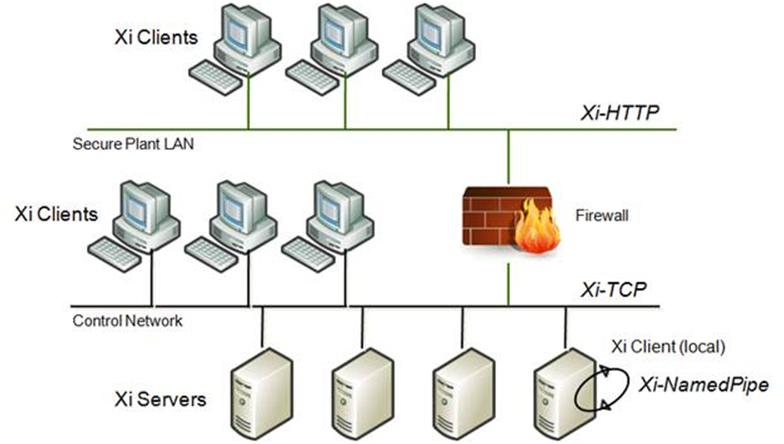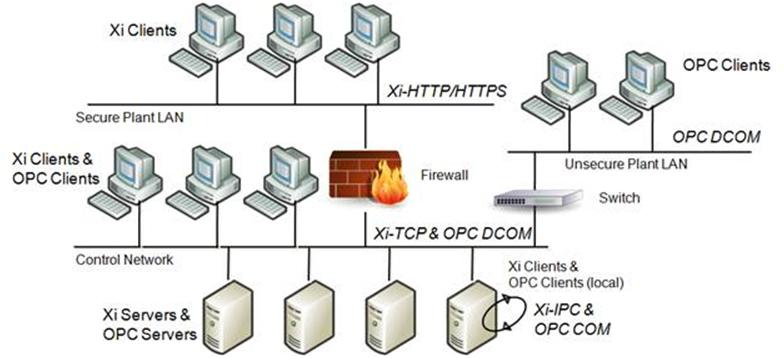OPC Xi Overview
The Express Interface (Xi / OPC .NET 3.0) is a new Microsoft .NET interface designed for secure and reliable access to automation systems. Xi provides an integrated set of methods for accessing both run-time and historical data, events, and alarms. It has been designed for fast and secure communication through firewalls and for simple implementation and use.
Xi defines a Service Oriented Architecture (SOA) that is based on MMS (Manufacturing Messaging Service) and WCF (Windows Communication Foundation).
The main design goals were:
- Security – for secure communications including access through firewalls
- Simplicity - to make servers and clients easy to implement, configure, and deploy
- Robustness – for reliable communications with error recovery
- Plug-and-Play – for automatic discovery of servers and their communications capabilities
- Backward compatibility - for accessing OPC DA, AE and HDA servers using a single .NET interface
- Protocol transparency – for efficient client/server communications when both the client and server are on the same platform or within the same local area network, and when the client is located on external networks, including the Internet (see Figure below).

Express Interface Communication
Xi / OPC .NET 3.0 is designed to be a native interface for communication between Microsoft based clients and servers. It is based on .NET3.5 WCF and allows the use of any WCF binding such as:
- Named Pipes for fast local communication
- TCP with or without security
- HTTP in different forms (including industry standard Web Services)
Supplementing traditional security mechanisms, including those available through .NET, Xi uses an innovative, patent pending security mechanism that gives plant administrators the ability to restrict access to servers based on, but not limited to, the location of the client.
Additionally, separate server communication endpoints are used for different types of server access:
- Management services are handled with high security because the communicated data could easily be interpreted. Top performance isn't required for these services and the security overhead is acceptable.
- Read/Write/Subscribe services use endpoints designed for high performance. Encryption may optionally be used on these endpoints; however values transmitted by these endpoints are not accompanied by identifiers to make interpretation more difficult.
Express Interface Use
Xi has been designed to provide new .NET client applications a simple .NET interface for easy access to OPC DA (Data Access), OPC HDA (Historical Data), OPC A&E (Alarms & Events), and to proprietary Alarm and Event historians.
Xi was designed to be backwards compatible with OPC servers and may be used in the same system as OPC clients and servers. Xi and classic OPC DCOM communications are compatible on the same network.

Xi has been designed for plug-and-play. Plug-and-play allows clients to automatically discover and connect to Xi servers. Clients no longer need to be configured with information required to address and connect to servers. Further, servers can be kept up-to-date with the latest communications available knowing that clients will be able to automatically adapt and connect to the server.
Xi has been designed as a secure and robust .NET interface that supports a native interface for .NET clients and web service interface for non-Microsoft based clients. In addition, because it has been designed as a native interface, additional protocols, such as OPC UA can be easily layered on top to extend the types of clients that can connect.
Summary
Xi / OPC .NET 3.0 is a secure, robust .NET interface that has been designed for ease of implementation and use. It has also been designed to ensure that future communications can be easily integrated and used without having to make changes to clients or servers.


